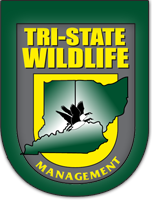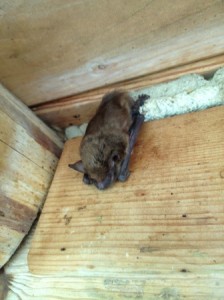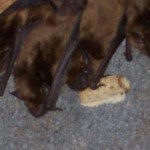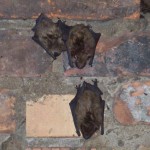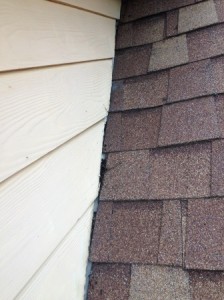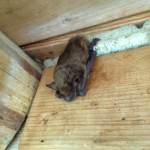Do you have bats in your attic? To rid your home of bats for good, call Tri-State Wildlife Management. Put our experience and expertise to work for you! (859) 635-0037
Tri-State Wildlife Management – Protecting You, Your Property, and Your Investment
Covington KY Bat Removal: In our area, bats typically hibernate the winter long, the exception being warmer winter days when you may spot a bat(s) outside. Bats often take advantage of the comfort of attics and chimneys, both in the winter and the summer. Crevices of homes make perfect hibernation spots in the winter and maternity colonies or roost sites in the summer. With winter right around the corner, now is the time to rid your attic of bats. If bats have access to your attic now, they are sure to use it as their hibernation site in the colder months.
Fall is the perfect time to remove and exclude bats from your home or business, since bats are not yet hibernating, and all the young born this year are able to fly. Once cold weather sets in for good, full bat exclusion falls into a blackout period. During this time, construction gaps and secondary entries can be repaired on structures, but it is important to always keep a main entry open for bats to fly in and out. These main entries must be kept open until spring when all bats are sure to be active in the evening (in which they will fly out of your attic to hunt). Tri-State Wildlife Management (TSWM) uses special vents for the bat removal process which allow bats to leave your attic as normal to hunt while prohibiting reentry. After all bats have left your attic, permanent repairs are made to seal entry and exit points. Total bat exclusion (permanent repair of main entries) can restart again usually in early spring, but the date fluctuates from year to year, depending on the weather.
Bats are great mammals to have around. If you’ve ever observed a bat feeding at twilight, you already know why – they eat a variety of flying insects, including mosquitoes. Despite the advantages of having bats around, there are many serious disadvantages to having them in your home. First, they can create significant damage to structures. Bats create foul latrines, made up of both guano and urine that cause a horrible odor, soil insulation, and can weaken the structure. When entering and exiting a structure, bats defecate, leaving staining along the home. In addition, they leave black, oily rub marks at entries.
Bats also pose health/hygiene concerns including rabies, histoplasmosis, and bat bugs. When bats transmit rabies, it is most typically through a bite. If bitten, the bat should always be tested if it can be caught. If the bat is not caught, or if it tests positive for rabies, rabies shots must be taken. Without treatment, rabies ends in death. Sometimes a bat is found in the living space of a home. If the bat had access to children or anyone who may not know/may not be able to communicate that they’ve been bitten, rabies shots are encouraged. Although the most serious, rabies is not the most common threat that bats pose. Histoplasmosis is a common lung disease caused by a fungus that grows on guano. It is important to always wear the proper protective gear when in the same vicinity as bat guano, as the fungus is easily disturbed. Although bat bugs pose no serious health threat, just like bed bugs, they are a parasitic nuisance to be avoided.
Tri-State Wildlife Management is fully licensed and insured, and we stand behind all our work
For bat removal in Covington, KY or anywhere in Northern KY, Cincinnati, or Southeast IN, call Tri-State Wildlife Management at (859) 635-0037
 The technicians of Tri-State Wildlife Management are Bat Standards Certified through the National Wildlife Control Operators Association.
The technicians of Tri-State Wildlife Management are Bat Standards Certified through the National Wildlife Control Operators Association.
